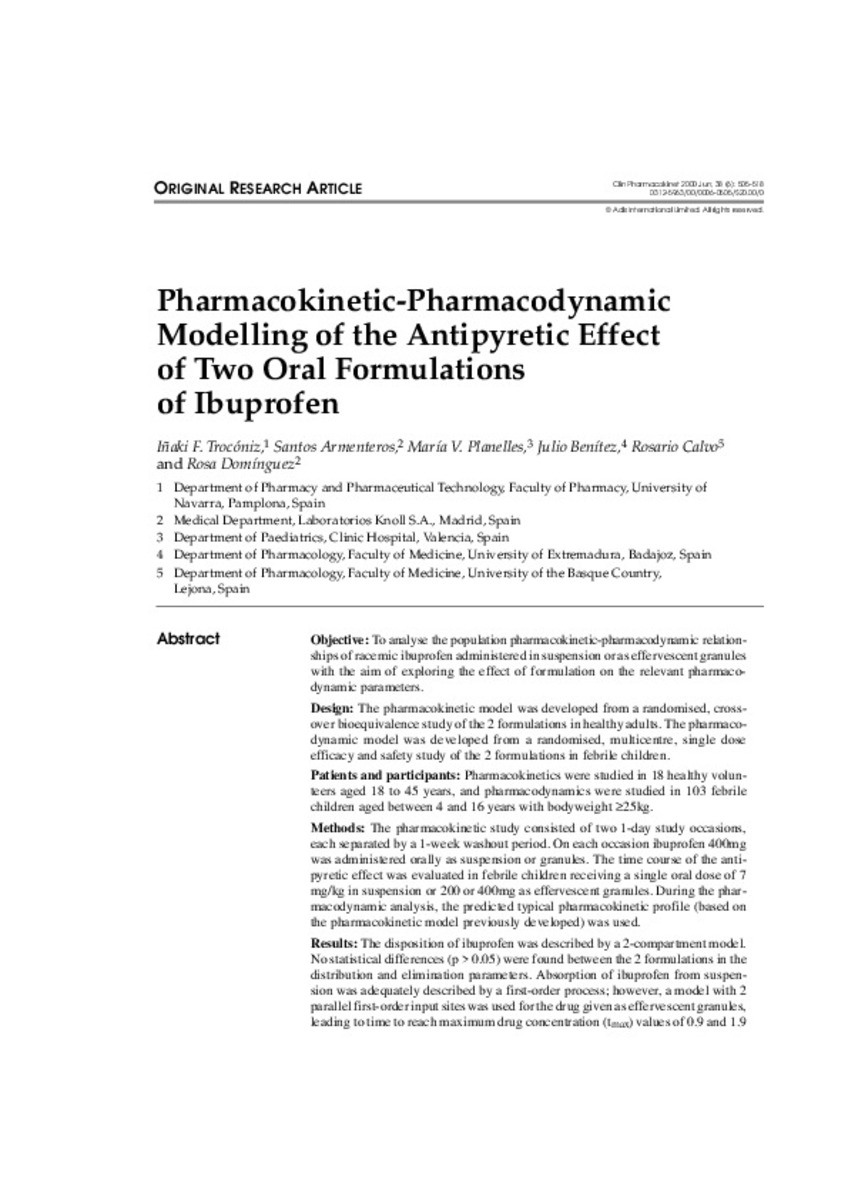Pharmacokinetic-Pharmacodynamic Modelling of the Antipyretic Effect of Two Oral Formulations of Ibuprofen
Keywords:
Pharmacokinetics
Ibuprofen
Pharmacodynamic model
Pharmaceutics
Citation:
Trocóniz IF, Armenteros S, Planelles MV, Benítez J, Calvo R, Domínguez R. Pharmacokinetic-Pharmacodynamic Modelling of the Antipyretic Effect of Two Oral Formulations of Ibuprofen. Clin Pharmacokinet. 2000 Jun;38(6):505-18.
Statistics and impact
0 citas en

0 citas en

Items in Dadun are protected by copyright, with all rights reserved, unless otherwise indicated.







